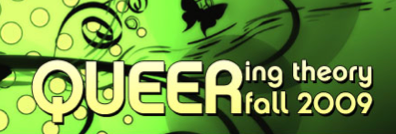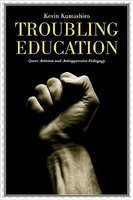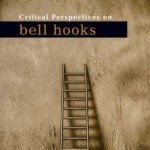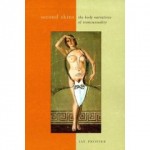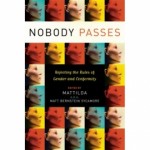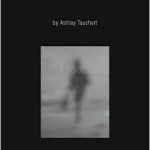It is January 6. In 13 days my spring semester begins. Remarkably, my syllabi for Feminist and Queer Explorations in Troublemaking and Contemporary Feminist Debates are in pretty good shape. Time to reflect on what worked/didn’t work in my course blogs this past semester. If you recall (if not, see here), one key reason I started writing in this blog was to practice what I preach/teach. I imagined that actually participating in what I assign for my students would help me to create more productive and engaging blog assignments. It would also help me to understand the limits and possibilities of using the blog. And, I hoped, it would help me to understand better how blogging can contribute to my feminist pedagogical goals. It did all three of these things. I strongly believe that my development of and participation in this trouble blog has contributed greatly to the success of the blog assignments in Queering Theory and Feminist Pedagogies. But, before I get to how these assignments were successful (and also where they could be improved, because isn’t there always room for improvement?), let me start by describing the assignments for each class.
QUEERING THEORY: upper-level undergrad seminar, 12 students
Brief summary/background: When I started putting the syllabus together last July, I knew I wanted to make the blog a central part of the course. The last time I taught Queering Theory, in spring of 2008, the assignments were fairly effective and we (both me and the students) enjoyed the semester. We had a blog that we used, but not that much. This time, I was ready to mix it up and really push at the limits of how blogging could (or should?) be used in the classroom. A class about queering seemed perfect for such an experiment. By making the course rely so heavily on the blog, the students and I could work to challenge/unsettle/disrupt/queer the course. We could potentially disrupt where (not just in the seminar room, but wherever our computers were) and when (not just during the officially scheduled class time, but at 2 AM if we wanted) class engagement occurred. We might also be able to unsettle what counted as academic engagement and rigorous writing (blog entries instead of formal papers) and who counted as an expert (not just the professor or the authors of our “scholarly” texts, but the students as blog authors/posters). Here is part of the official assignment that I distributed to them a week or two into the semester:
ENTRIES: 30% or 300 points (15 total @ 20 points each)
7 Direct engagements with the readings
3 Annotated bibliographies
5 “Queer This!” posts
ACTIVE ENGAGEMENT: 10% or 100 points (10 total @ 10 points each)
3 Comments posted in response to the query in “Class Summaries and Queries”
4 Comments posted on direct engagement OR annotated bibliography entries.
3 Comments posted on any blog entries
* NOTE: While you are encouraged to post as much as you are able, only 2 entries and 1 comment per week will count towards your overall grade.
Included in the official handout was a more detailed explanation of each type of entry/comment. You can download it here. I recognize that the amount of detail I give for the blog entries might seem overwhelming (which I think it was for some of them), but it also demonstrated that I was taking this whole blog thing seriously–because I had put so much thought into the assignment, they could trust that I knew what I was doing. As one student pointed out in her final blog entry, trust (between me and her, her and the other students) was central to making this blog experiment a success. A week or so after distributing and discussing this handout, I gave them a worksheet and more instructions about how to keep track of their participation. You can download that here. Here is a screen shot of page 1 of the worksheet.
 Central to the blog assignment was the tracking of a particular theme related to queering theory. Students were able to pick which theme they wanted to track. Their direct engagements and annotated bibliographies were required to engage with that theme. They also had to read an additional essay related to their theme and present on it. Finally, they were required to post (or submit) and briefly present on a final wrap-up in which they defined their term and reflected on the experience of blogging. In total, the blog assignment was worth 800 points out of 1000 total points (300 points for blog entries, 100 points for comments, 150 points for presentations, 250 points for the final wrap-up). That’s right. 80% of their grade was the development of and participation in our course blog. As I have stated before, I am amazed and impressed with my students’ willingness to engage in this risky experiment, especially since only two of them had taken courses with me before.
Central to the blog assignment was the tracking of a particular theme related to queering theory. Students were able to pick which theme they wanted to track. Their direct engagements and annotated bibliographies were required to engage with that theme. They also had to read an additional essay related to their theme and present on it. Finally, they were required to post (or submit) and briefly present on a final wrap-up in which they defined their term and reflected on the experience of blogging. In total, the blog assignment was worth 800 points out of 1000 total points (300 points for blog entries, 100 points for comments, 150 points for presentations, 250 points for the final wrap-up). That’s right. 80% of their grade was the development of and participation in our course blog. As I have stated before, I am amazed and impressed with my students’ willingness to engage in this risky experiment, especially since only two of them had taken courses with me before.
FEMINIST PEDAGOGIES, graduate seminar, 14 students
Brief summary/background: This past semester was my second time teaching Feminist Pedagogies. When I taught it the first time I had always hoped that the blog could be a productive site for engagement with the ideas. We used it but, just like in my first queering theory blog, we didn’t use it that much. It wasn’t a place for us to engage with ideas, only a place to post notes or additional resources. When I found out that I would have 14 students and that the time for my class had been cut from 2 1/2 hours to 2 hours 10 minutes, I knew that the blog would be essential for allowing us to discuss all of the material. So I decided to emphasize the blog as one of the places where students would raise questions and discuss readings/pedagogical theories/teaching. Just like with the queering theory course, a course on feminist pedagogies seemed to be a fitting place to experiment with blogging. Here is the assignment that I gave them:
REQUIRED BLOG ENTRIES:
You are required to actively participate on our course blog. In addition to posting your pedagogical question on the blog (worth 50 points), you are required to post 10 posts (either as new entries or comments on other class members’ entries) over the course of the semester (worth 15 points each).
Pedagogical Question:
Each session will begin with a wrap-up discussion of pedagogical questions that are first raised by several students on our course blog. The questions can be theoretical and/or practical in nature (e.g.: How do you deal with students who don’t “get it”? How do we create community in big classes? What characteristics should a feminist classroom have?). It could also stem from your own experiences as a teacher or student. We will spend approximately 10-15 minutes on the discussion as we brainstorm responses. Each week, several students will be responsible for posting their questions on our course blog. The questions should be posted by Monday evening.
10 Required Posts:
5 direct responses to pedagogical questions
2 related to the development of your syllabus/reading list
3 your choice on feminist pedagogies
Direct responses: These 5 posts can be comments posted directly on the original pedagogical question post, or they can be new entries that directly engage with and respond to the pedagogical question. Your response should be thoughtful and draw upon course readings, discussions and/or your own experiences in the classroom as a student or teacher.
Syllabus-related posts: The purpose of these 2 posts is to enable you to chart your progress as you develop your syllabus. Your posts can be about anything related to that process: questions about possible readings, mini annotated bibliographies on sources that you are planning to use, reflections on figuring out your topic, readings, or assignments. The only requirement is that one of these “syllabus progress reports” must be posted by November 4 and the other one must be posted by December 16.
The remaining 3 posts can be about anything related to the course and feminist pedagogy. You could post questions about the readings (what certain terms mean, etc) or mini annotated bibliographies with sources on feminist pedagogy or teaching. Or, you could share images/ideas/examples with our class that might be useful for teaching. You could even post your critical reflections on why blogging is/isn’t effective in the classroom or offer another direct response to a pedagogical question.
You are required to make 5 posts by November 4.
The remaining 5 posts should be completed by December 16.
There you have it, the blog assignments for each course. In upcoming posts I want to write about how these assignments did/didn’t work. I also want to write about how they reflect my pedagogical vision and values. And I want to offer some advice for anyone else wanting to experiment with blogging.




